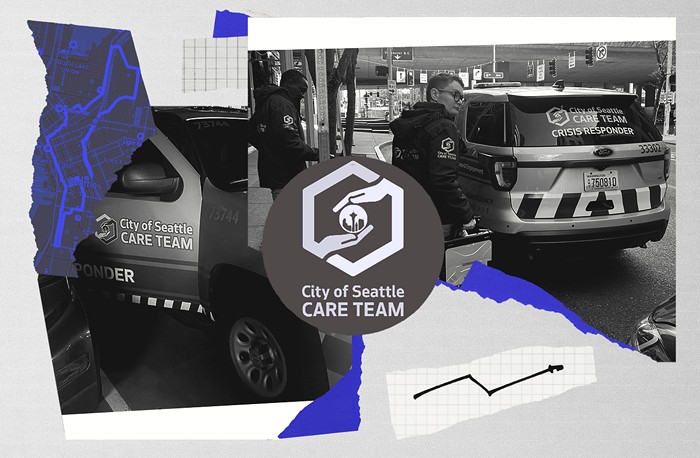The duo is touting the plan as a new style of community policing, but as the precinct closure idea shows, it's anything but. Closing down storefronts where citizens can interact with police is the opposite of community policing. While it has some promising aspects, Kerlikowske and Nickels' plan is definitely not community oriented. Really, it's a budget cut with a cute name.
The new plan breaks Seattle down by precinct, giving each area's captain more power over crime-fighting efforts. The plan also decentralizes the specialized narcotics, vice, and gangs units, which are currently housed downtown. This new precinct-centric formula is based on recommendations from a $150,000 consultant study released in July. Kerlikowske and Nickels contend that the study's recommendations--moving more power to the precincts--dovetail with the city's need to cut costs.
Sidestepping the messy details of their plan--civilian workers are getting laid off, specialty detectives are angry over getting split up and sent to different stations--Kerlikowske and Nickels proudly presented the plan as "neighborhood policing." Describing the precincts as "smaller, bite-sized chunks," Kerlikowske explained that with the city's limited resources, this plan is ideal. Nickels robotically backed him up. "Neighborhood-based policing makes the most sense," he said on cue.
While there are some benefits to a "neighborhood-based" model--like giving precincts the autonomy to target neighborhood-specific problems--it's not community-oriented policing, and the mayor and chief should stop painting their proposal as such.
The study Nickels and Kerlikowske looked to for guidance actually decried Seattle's effort at community policing. In 1994, then-chief Norm Stamper unveiled community policing here. But the July 2002 study on the Seattle Police Department by Virginia- based Public Administration Service Associates essentially called Stamper's Seattle effort a failure ("This all out effort to become 'community oriented' and the resources it required, significantly reduced the time and assets available to the SPD to maintain proficiency in fundamental policing skills," the report said). Despite that harsh criticism, Kerlikowske and Nickels are selling their budget cut as Seattle's great new community plan, telling neighborhoods they're going to have "substantially increased" police patrols, and that the cops will have a better understanding of the neighborhoods' needs.
However, even with a reshuffle of specialized detectives, Seattle's precincts aren't getting a big boost in patrol officers. Seattle is already lacking officers (measured in cops per 1,000 residents) compared to other departments around the country, and the city's $60 million budget crunch forced the police to cut staff. The cops are going to lose nearly 30 officers through attrition, and about 45 civilians through layoffs. Detectives in the specialty units will be split up and sent to the precincts, but it's unlikely their presence will mean more cops on the street. "To say those positions are going to the precincts is disingenuous," one officer explains.
Not only will the increase in patrol officers be negligible, but with basic investigation tasks added to their plate, officers will be too swamped to be "neighborhood focused." While Kerlikowske wants to give officers investigation responsibility--instead of dealing with some 911 calls by calling detectives (as they do now), cops will snap evidence photos and chase down leads--it's unlikely patrol cops will have time. Most officers are already swamped clearing a 911-call backlog their entire shift. If there's not a significant boost in the number of officers on the street responding to those calls, cops won't have time for their new duties.
Overall, cops aren't convinced that the new structure is going to help neighborhoods, says Ken Saucier, head of the cop union. "It's not going to have any effect," he explains. "You can put another coat of wax on that car, but it's not going to make any difference."


















